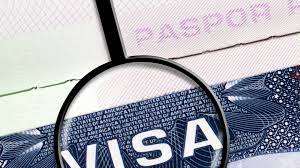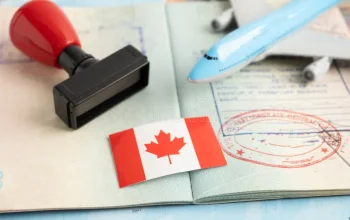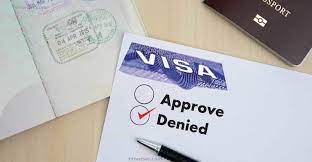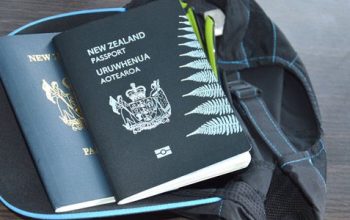Welcome to our blog post on Indian Visa on Arrival, where we unravel the secrets behind simplifying travel procedures for international visitors. With its diverse culture, rich history, and breathtaking landscapes, India has long been a sought-after destination for travelers across the globe. However, obtaining a visa has often been seen as a cumbersome process that hinders the spontaneous wanderlust within us. But fret not! In this article, we bring you exciting news that will make your journey to India even more seamless – enter Indian Visa on Arrival. Join us as we delve into this game-changing initiative that promises to revolutionize how international visitors explore this incredible country without any hassle or delay. Get ready to embark on an adventure like never before! INDIA SUVIDHA SELF DECLARATION FORM
Introduction to Indian Visa on Arrival
India is a country that is known for its diverse culture, rich heritage, and warm hospitality. It has always been a popular destination for travelers from all over the world. However, in the past, obtaining an Indian visa was a lengthy and cumbersome process that deterred many potential visitors.
In order to simplify travel procedures and attract more international tourists, the Government of India introduced the concept of “Visa on Arrival” or “e-Visa” in 2014. This system allows citizens of eligible countries to apply for their visa online before traveling to India and receive it upon arrival at one of the designated airports.
Eligibility for Indian Visa on Arrival:
The Indian Visa on Arrival facility is available to citizens of over 150 countries including USA, Canada, UK, Australia, New Zealand, Singapore, Japan, Germany and many more. The complete list can be found on the official website of Indian e-Visa. However, it should be noted that this facility is only available for tourist visas with a maximum stay period of 60 days.
Applying for an Indian Visa on Arrival:
To apply for an Indian e-Visa or Visa on Arrival, travelers need to visit the official website and fill out the online application form with personal details such as name, address,
passport information and travel details. They are also required to upload a scanned copy of their passport’s
History and Purpose of the Indian Visa on Arrival Program
The Indian Visa on Arrival program is a relatively new initiative introduced by the Government of India in 2014. This program allows citizens of certain countries to apply for and obtain an Indian visa upon arrival at select airports in India, instead of having to go through the lengthy process of applying for a traditional visa beforehand. INDIAN VISA ON ARRIVAL
The idea for this program was first proposed by the Ministry of Tourism in order to promote tourism and attract more international visitors to the country. The Indian government recognized that the existing visa application process was complex and time-consuming, often deterring potential tourists from visiting the country.
Thus, in January 2010, the pilot phase of the Visa on Arrival (VoA) scheme was launched at four major airports – Delhi, Mumbai, Chennai and Kolkata – for citizens of five countries: Japan, Singapore, Finland, Luxembourg and New Zealand. This pilot phase received positive feedback from both tourists and immigration officials alike.
Encouraged by its success, in November 2014, the government expanded this scheme to include citizens from 43 countries including Australia, Brazil, Germany, South Korea and United Kingdom among others. Furthermore,in April 2017,the scope of VoA facility was further extended to include business travelers as well as medical tourists seeking short-term treatment under certain categories.
The purpose behind this initiative is two-fold – making it easier for international visitors to travel to India while also promoting tourism and boosting economic growth. By simplifying travel procedures with Visa on Arrival facilities at selected airports across India,it aims
Eligibility Criteria for Indian Visa on Arrival
The Indian Visa on Arrival scheme has been introduced to simplify the visa application process for international visitors and promote tourism in India. However, not all foreign nationals are eligible to apply for a visa on arrival. In this section, we will discuss the eligibility criteria for obtaining an Indian Visa on Arrival.
1. Nationality:
Only citizens of certain countries are eligible to apply for an Indian Visa on Arrival. As of now, citizens of 167 countries can avail this facility. Some of these countries include Japan, Singapore, South Korea, Australia, Germany, France, Spain, United Kingdom, USA and Canada among others.
2. Purpose of Travel:
The Visa on Arrival is only available for those traveling to India for tourism purposes or short-term medical treatment. Business travelers and those seeking employment in India are not eligible to apply under this scheme.
3. Valid Passport:
Applicants must possess a valid passport with at least six months validity from the date of arrival in India. The passport must also have at least two blank pages for stamping.
4. Return/Onward Journey Ticket:
Travelers must have a confirmed return/onward journey ticket while applying for the visa on arrival. The return ticket should be within 60 days from the date of entry into India.
5. Sufficient Funds:
Foreign nationals must have sufficient funds to cover their stay in India during their visit (minimum USD 1500 or equivalent in convertible foreign currency).
6.Who Can
Step-by-Step Guide for Applying for an Indian Visa on Arrival
Applying for an Indian Visa on Arrival can seem like a daunting and complicated process, especially for international visitors. However, with the right information and preparation, it can be a smooth and hassle-free experience. In this step-by-step guide, we will walk you through the entire process of obtaining an Indian Visa on Arrival.
Step 1: Determine your eligibility
The first step in applying for an Indian Visa on Arrival is to determine if you are eligible for this type of visa. Currently, citizens of 169 countries are eligible for the Indian e-Visa, which includes tourist, business, medical, and conference visas. You can check your eligibility by visiting the official website of the Government of India’s Bureau of Immigration.
Step 2: Gather required documents
Once you have determined your eligibility, it is essential to gather all the necessary documents before starting the application process. These documents include:
– A valid passport with at least six months’ validity from your date of arrival in India.
– A recent passport-sized photograph (5×5 cm) with a white background.
– A return or onward ticket showing your intention to leave India within 60 days.
– Proof of sufficient funds to cover your stay in India (at least $150 per day).
– Details of accommodation bookings or a letter from your host stating that they will provide accommodation during your stay.
Step 3: Fill out the online application form
To apply for an Indian Visa on Arrival, you will need to fill out an



